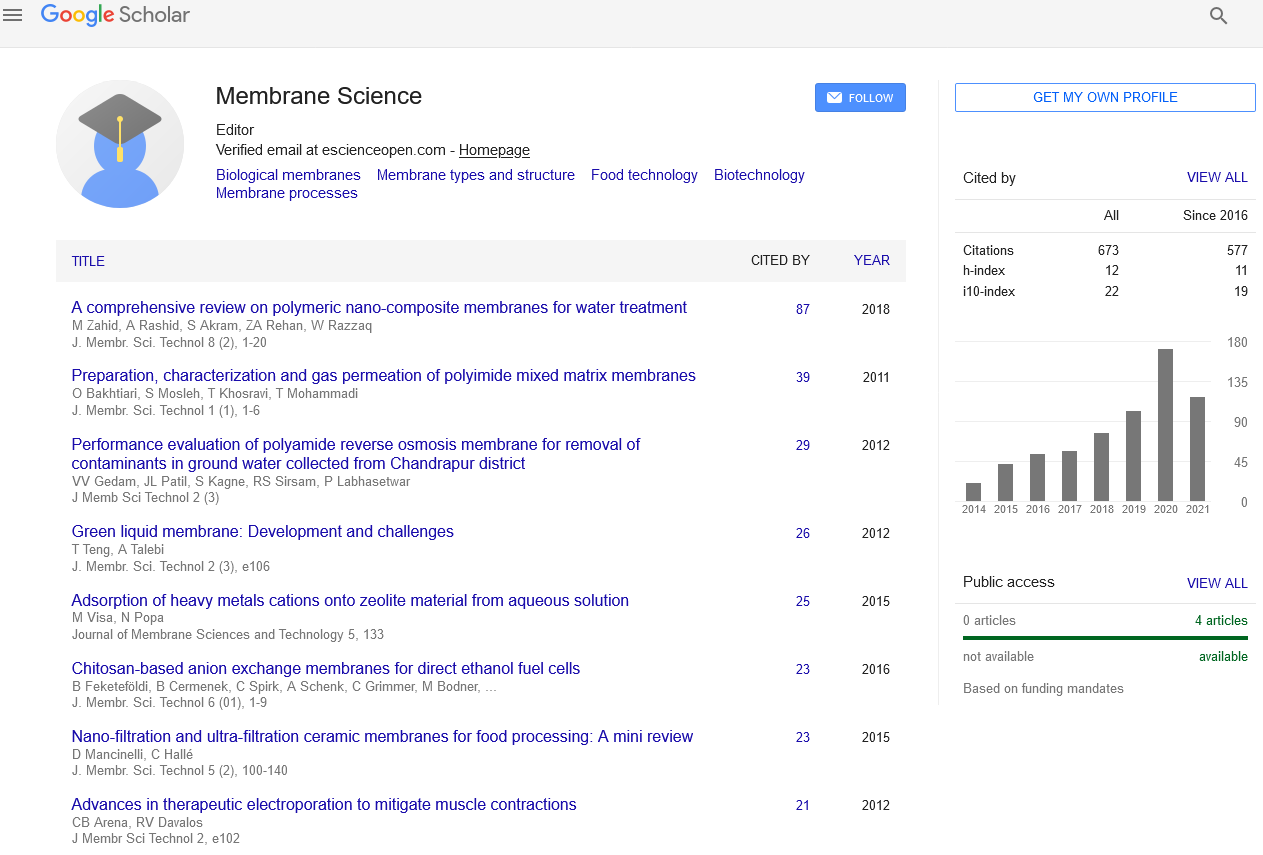Indexed In
- Open J Gate
- Genamics JournalSeek
- Ulrich's Periodicals Directory
- RefSeek
- Directory of Research Journal Indexing (DRJI)
- Hamdard University
- EBSCO A-Z
- OCLC- WorldCat
- Proquest Summons
- Scholarsteer
- Publons
- Geneva Foundation for Medical Education and Research
- Euro Pub
- Google Scholar
Useful Links
Share This Page
Journal Flyer

Open Access Journals
- Agri and Aquaculture
- Biochemistry
- Bioinformatics & Systems Biology
- Business & Management
- Chemistry
- Clinical Sciences
- Engineering
- Food & Nutrition
- General Science
- Genetics & Molecular Biology
- Immunology & Microbiology
- Medical Sciences
- Neuroscience & Psychology
- Nursing & Health Care
- Pharmaceutical Sciences
Abstract
Benign Graphite-Chitosan Blended Bio-Composite for Sorption of Toxic Nitrate from Water
Assorted nitrogen/phosphorous fertilizer, pesticide and nutrient usage is intensified for crop developments in agricultures in past few decades. Unused nitrate get percolated from sandy/textured soil during rains. Nitrate poisoning imparts methemo-globinemia/blue-baby syndrome besides eutrophication as detrimental to human and ecosystem both. Nitrate contamination is mitigated by water de-nitrification being achieved via various treatments viz; ion exchange resins, Reverse Osmosis (RO) and distillation. Ion exchange operates at household level, softener filters calcium/magnesium laden water passed through resins which exchanges chloride for nitrate. Regeneration of resin is costly issue, so ion exchange is not preferred. RO is helpful, but owns some disadvantages viz; expensive, high energy inputs, inefficient, squander more water and operates at low pressure. Distillation being slow and seek frequent cleaning for accumulated matter removals is unsuitable for large scale water treatments. Consequently, adsorption onto fabricated natural and synthetic adsorbents is most viable and opted for nitrate removal from water. This research derived chitosan based bio-composite by doping graphite and used it for nitrate removal from water in batch modes. Lower concentrations of nitrates removed faster; while for higher nitrate level gets removed slowly. Highest 90% removal efficiency is observed for 5 ppm nitrate sample while 10 ppm,15 ppm, 20 ppm, 25 ppm, and 50 ppm nitrate sample showed 88%, 79%, 71%, 66%, 60% respective nitrate removal capacity. Langmuir and Freundlich isotherms are examined for experimental data and Langmuir fits best. Graphite-doped chitosan biocomposite adsorbent appears benign over commercial adsorbents in terms of cost and efficiency. Used adsorbent gets regenerated by treatment with 0.1 N NaOH. Residual nitrate from the effluent/samples after sorption were analyzed by ion chromatogram at fix intervals.


